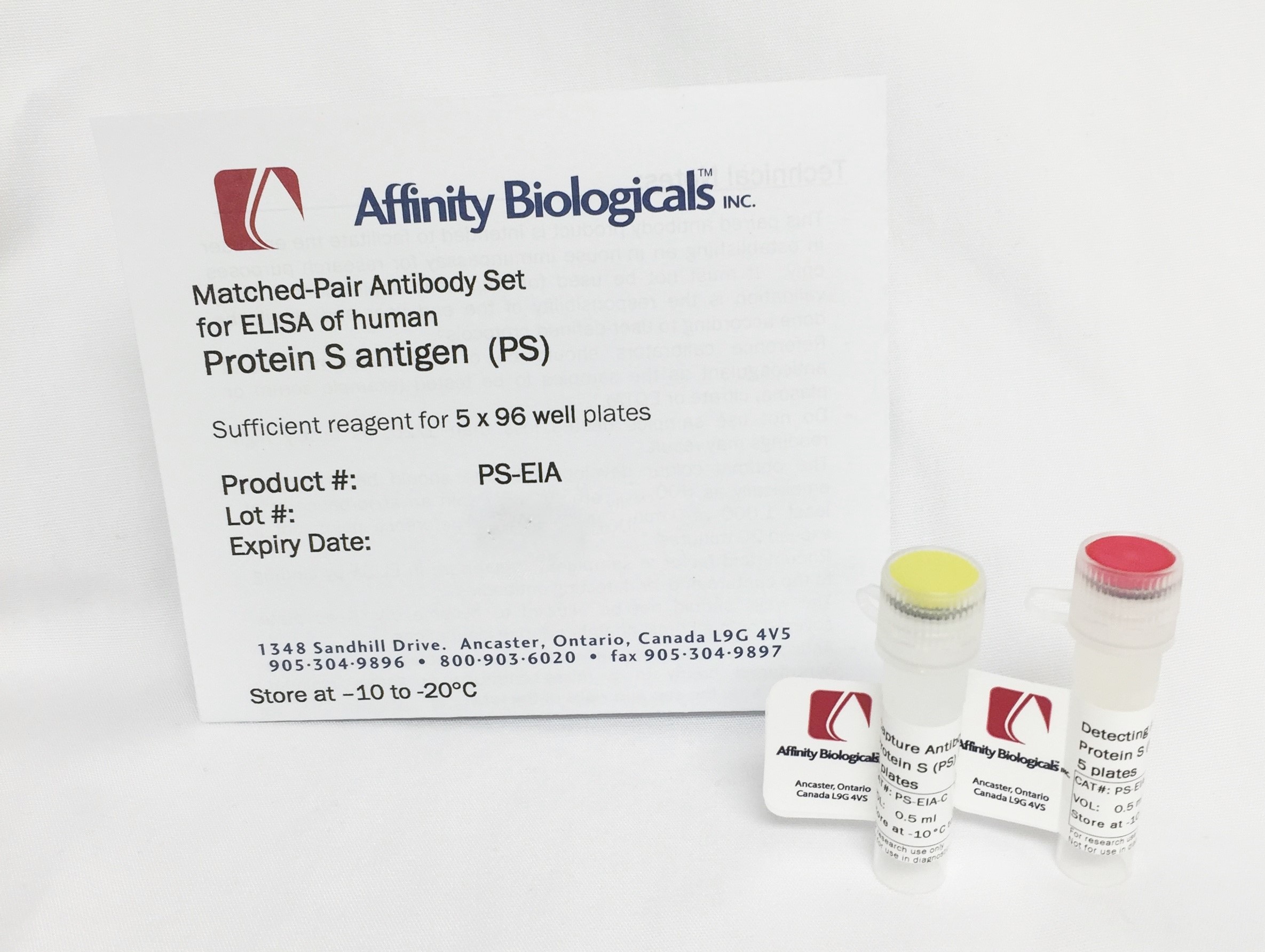Protein S Paired Antibody Set for ELISA
Paired Antibody SetsAffinity’s Protein S Paired Antibody Set consists of matched capture and detecting antibodies that have been titrated and optimized for use in sandwich style ELISA assays. The product as provided contains sufficient capture and detecting antibodies for five full 96-well microplates and contains a detailed protocol sheet containing directions for use, recipes for solutions and sources for additional materials required. This Protein S Paired Antibody Set is intended to facilitate the end user in establishing an “in-house” immunoassay for research purposes only and must not be used for diagnostic applications. Assay validation is the responsibility of the end user.
Supplied Materials:
- Capture Antibody (PS-EIA-C): One yellow-capped vial containing 0.5 mL of polyclonal affinity purified anti-Protein S antibody for coating plates
- Detecting Antibody (PS-EIA-D): One red-capped tube containing 0.5 mL of peroxidase conjugated affinity-purified polyclonal anti-Protein S antibody for detection of captured Protein S

Specifications
Storage and Shelf Life
Storing
between -10°C and -20°C
Type
Frozen
Expiration
Please inquire
Available Formats
| Cat # | Format |
|---|---|
| PS-EIA |
1 x 0.5 mL Capture Antibody (PS-EIA-C) 1 x 0.5 mL Detecting Antibody (PS-EIA-D) |

